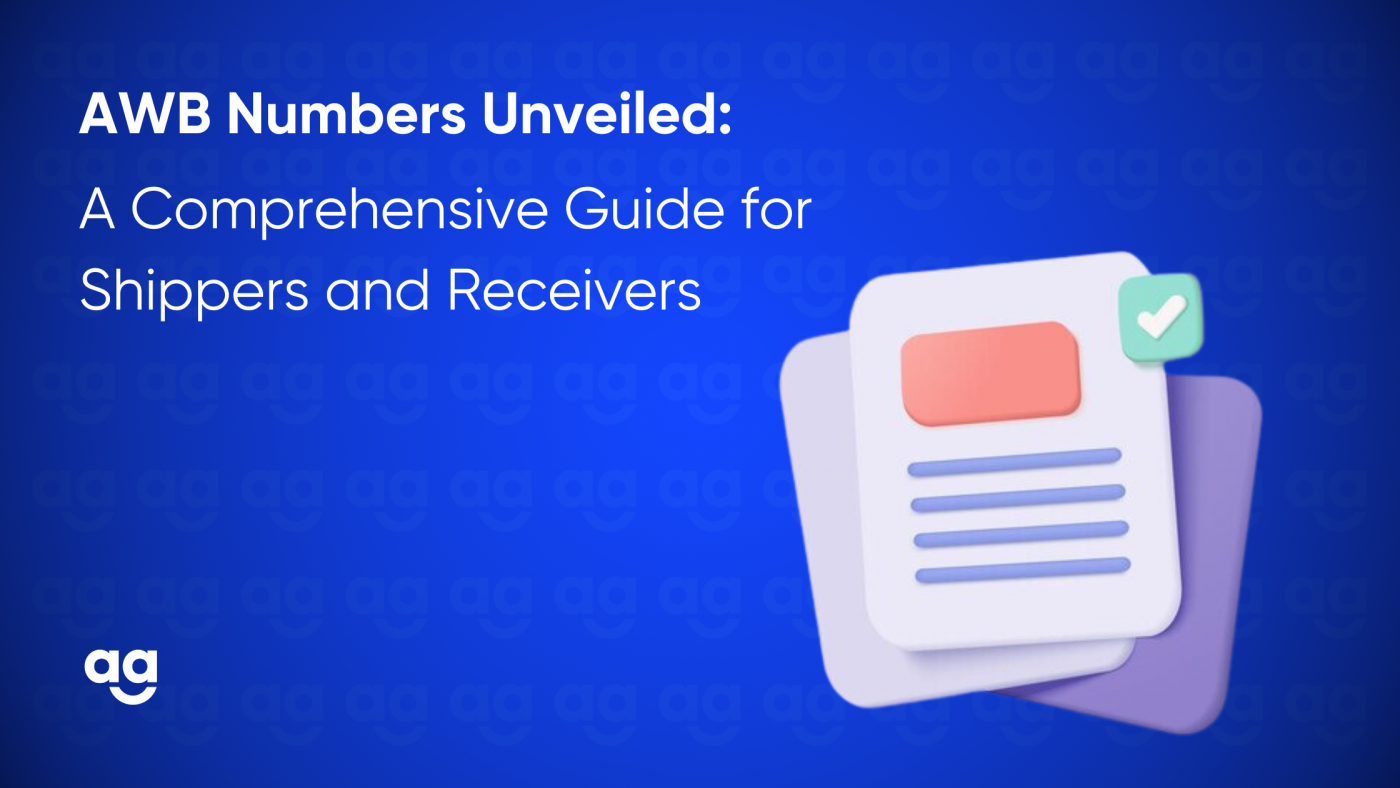Introduction
A seamless and effective supply chain is dependent on effective shipment monitoring in the huge and complex field of logistics. The Air Waybill (AWB) number, essential to the smooth flow of products through the air freight business, is the central component of this tracking mechanism.
In this extensive guide, we will explore the all facets surrounding AWB numbers, equipping you with all the information you need to successfully traverse the logistics environment.
Understanding the Basics
What is an AWB Number?
A Shipment is identified with the help of a unique identification number called as the Airwaybill Number (AWB) Number, in contrast to conventional tracking ways, they simplify the tracking procedue and help with real time updates on the shipment. AWB numbers are essential for precise and transparent logistics management for both shippers and receivers.
Eleven-digit codes on air waybills are used for booking, tracking delivery status, and determining the shipment’s present location. Air waybills come in eight sets, each with a distinct colour.
The Significance of AWB Numbers in Logistics
The foundation of tracking of shipments is an AWB number , because it helps the customers track their shipments from the point of origin to the point of destination. These tracking numbers promote accountability and transparency By lowering the possibility of mistakes and delays, the usage of AWB numbers improves the logistics process’ overall reliability.
Decoding AWB Number Components
1. Origin and Destination Codes
The airport codes for the departure and destination destinations are indicated by the first few digits of an AWB number. These codes are essential for tracking the shipment’s path and giving an overview of its travels. Comprehending these codes is crucial to figuring out the logistics path of a specific shipment.
2. Carrier Code and Unique Serial Number
The airline in charge of delivering the cargo is identified by the carrier code, which comes after the origin and destination codes. A distinct serial number that identifies every package comes next. These elements come together to form a unique AWB number that is associated with a particular cargo consignment.
Navigating AWB Tracking
How to Monitor Shipments Making Use of AWB Numbers
AWB numbers enable real-time shipment tracking for both senders and recipients. Users can easily obtain critical cargo information, including arrival and departure timings, transit locations, and projected delivery dates, using online platforms, smartphone apps, and other tracking tools.
Common Terminology in AWB Tracking
Navigating AWB tracking involves understanding common terms such as “Departure Scan,” “Arrival Scan,” and “Out for Delivery.” Familiarizing oneself with these terms enhances the ability to interpret tracking updates accurately, providing a comprehensive view of the shipment’s progress.
Best Practices for Shippers
Generating AWB Numbers
Logistics firms are essential to the process of creating AWB numbers for shipments. In order to assure accuracy, best practices for creating these data entail paying close attention to every little detail. Shippers and logistics companies should work together to expedite the AWB assignment procedure.
Addressing AWB Number Errors
Shippers need to be careful to be clear of common AWB number problems in order to preserve the seamless operation of logistics. Because accuracy is so important, shippers can reduce the possibility of mistakes that could cause supply chain interruptions by putting strict quality control systems in place.
Empowering Receivers
Receiving and Verifying AWB Numbers
Receivers are essential in confirming and double-checking AWB numbers after receiving products. This part of the process requires accurate record-keeping in order to reconcile shipments and make sure that the goods received match the relevant AWB codes..
Customer Support for AWB-Related Inquiries
Receivers who have questions about AWB can proactively contact customer service. The channels for communication and support that logistics companies usually give allow receivers to address any questions or problems they may have with their shipments.
Wrapping Up
It is clear from learning about the nuances of AWB numbers that these alphanumeric codes are essential to efficient logistics management. The secret to a smooth and transparent logistics experience is knowing AWB numbers, whether you’re a recipient wanting to track packages with accuracy or a shipper looking to optimize operations. With the aid of this thorough manual, shippers and receivers alike may confidently traverse the logistics environment, guaranteeing the quick and safe transportation of goods around the world. AWB figures, which were before mysterious, are now useful resources for anyone looking to improve and optimize their logistical processes.







 Shipping
Shipping







